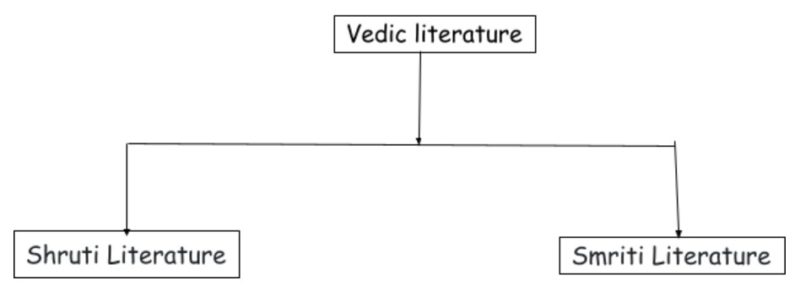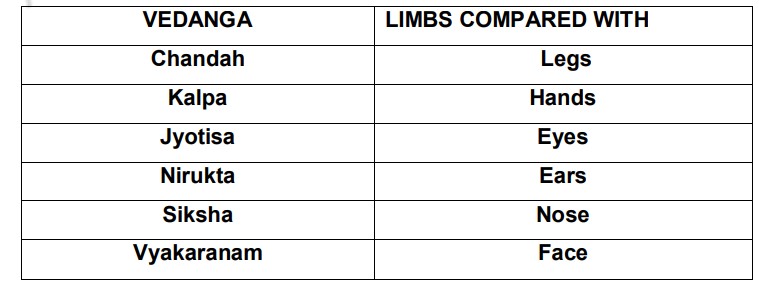No products in the cart.
The Vedic literature is divided into two categories: revealed literature and memorised literature. Vedas make up Shruti literature: Rig Veda consists of a collection of prayers, The Yajur Veda has a sacrificial handbook, whereas the Sama Veda contains largely Rig Vedic songs in musical form and the Atharva Veda contains magical charms.
Each Veda is divided into four sections: Samhita – hymns, Brahmanas – prose commentaries on Vedas with detailed observations on prayers and ceremonies, Aranyakas – texts to be read by Risrvis in forests as they deal with the mystic meanings of Samhita texts, and Upanishads – philosophical aspects to be taught by Acharyas to their trusted students.
Vedangas, Upavedas, and other supplemental elements of Vedic literature make up Smriti literature.
Vedic literature
The collections of spiritual texts written in Vedic Sanskrit and relationship lower back to historic India are called Vedas. In addition to the oldest Sanskrit literature, they are the earliest Hindu writings. The Vedas are claimed to had been handed down from technology to technology via way of means of oral transmission. As a result, they’re additionally known as Shruti. Rig Veda, Sama Veda, Yajur Veda, and Atharva Veda are the 4 Vedas that make up Vedic literature. The mantra textual material of each Veda is called as Samhita.

Shruti Literature – The word ‘Shruti’ means ‘to hear’ in Shruti Literature (sound). It discusses the Vedas(Rig Veda(Prayers collection), Yajur Veda(Sacrificial manual), Sama Veda(In musical form, mostly Rig Vedic hymns), Atharva Veda(Magical charms)), Brahmanas, Aranyakas, and Upanishads, which are sacred books. It is aware of insights and unquestionable facts.
Smriti Literature- Remember or Remembering is the which means of’smriti’ in literature. It would possibly regulate through the years or not. Post-Vedic Classical Sanskrit literature is discovered in Smriti Literature. Vedanga, Shad darshana, Puranas, Itihasa, Upveda, Tantras, Agamas, and Upangas are all a part of it.
Vedangas
The Vedanga are six Hindu auxiliary disciplines that originated in ancient times and are linked to the study of the Vedas. They provide numerous supporting and enhancing duties in the study, preservation, and protection of the Vedas and vedic traditions, much like the limbs of the body.
Vedangas have been around since ancient times, and the Brihadaranyaka Upanishad includes them as part of the Vedic literature’ Brahmanas layer. With the compilation of the Vedas in Iron Age India, several ancillary areas of study emerge. When the list of six Vedangas was initially conceived, it remains unknown. Around or after the middle of the first millennium BCE, the Vedangas most likely emerged towards the conclusion of the Vedic period. The Nighantu by Yaska, which dates from around the 5th century BCE, is an early text in the genre. Because the language of the Vedic writings written millennia before became too archaic for the people of the period, several supplementary branches of Vedic studies arose.
The six Vedangas are Siksha, Chhanda, Vyakarana, Nirukta, Jyotisha and Kalpa.
Chandas = metre
Kalpa = ritual
Jyotishya = astronomy
Nirukta = etymology
Shiksha = phonetics
Vyakarana = grammar
The Upa Vedas (additional Vedas) are mostly secular in nature. Music is Gandharva Veda, sculpting is Shilpa Veda, medicine is Ayur Veda, and archery is Dhanur Veda. Sutras (that guide people in various fields). The Grihya Sutras are concerned with home rites. The Shrauta Sutras are concerned with public rites. Dharma Sutras deal with customary law and customs, whereas Sulha Sutras deal with the science of altars. The Vedangas are extremely significant, as the following line from Paniniya illustrates.
छन्दः पादौ तुवेदस्य हस्तौ कल्पोऽथ पठ्यते।
ज्योततषामयनंचक्षुतनिरुक्तं श्रोत्रमुमुययते।।
शिक्षा घ्राणंतुवेदस्य मुखं व्याकरणं स्मतृ म्।
तस्मात्साङ्गमधीत्यैव ब्रह्मलोके महीयते।।—- पाणणनीय शिक्षा 41,42
Vedangas:

1.) Siksha
sets out the norms of phonetics — pronunciation, sounds, and the duration of each syllable’s utterance – euphony. Through akshara suddhi (syllable purity), svara suddhi (tonal / pitch purity – addressed in Vol. 1.2), maatraa suddhi (durational purity), balam (force of articulation), samam (evenness), and santana: (continuity). In the case of Vedic language, phonetics is especially important because, as described in the last issue of the Journal (Vol. 1.2), a difference in sound has radically different consequences. Because of their significance, the first part of the Taittiriya Upanishad – siksha valli – mentions these six traits in the opening verse:
शीक्षां व्याख्यास्यामः। वर्णस्वरः ।
मात्रा बलं। साम सन्तानः ।
इत्युक्त शीक्षाध्यायः ।।
That is why grammarian Panini explains in his “paanineeya siksha” how much attention should be taken when singing the Vedas:
व्याघ्री यथा हरेत् पुत्रान्
दंष्ट्राभ्यां च न पीडयेत्।
भीत पतनादेताभ्यां
तद्वत् वर्णान् प्रयोजयेत् ।।
The mantras must be sung lucidly, unblurred, unfaded, and not too loudly like the mother tiger (cat family) bears her young by its teeth (strong, so that the cub does not fall, but delicate, so that it does not injure). They should never be said casually or in staccato tones!
Maatruka Maatru is the cosmic Mother, and the 51 letters are in Her likeness in Sanskrit. According to the Siksha Sastra, these 51 letters symbolise different portions of Her body and even specify which one represents which.
2.) Vyakaranam
Sage Panini’s sutras or aphorisms are the most important expositions of Grammar. Because it includes eight chapters, it is called ashtaadhyaayi. The genesis of the Panini Sutras is a fascinating story. Lord Nataraja (Siva) clicked his damaru 9 times and 5 times at the completion of the Cosmic Dance (14 times). Sanaka and other rishis were present at the dance. Through his “divya dhrushti,” Sage Panini also watched the dance. Lord Siva created the vyakarana sutras or Mahesvara sutras using the 14 sounds made by His damaru (see Sanskrit Lesson of Vol. 1.1). They are recited on Sravana Poornima during the Upakarma festival.
Sage Patanjali wrote the Maha Bhashya, a commentary on the Vyakarana. Vararuchi contributed the other comments. The Vyakarana, as well as the two comments, are essential writings in the Vyakarana Sastra. The Sabda Brahma Vaada – that Sound and Brahman are One – is the foundation of the Nada Brahma Upasana (Vol. 1.2) – Music.
3.) Chandas
Though the word chandas can also apply to the Vedas itself, it refers to the metre of vedic poetry here. The Rig and Sama Vedas are entirely composed of poems, but the Yajur Veda contains both prose and poetry. A sloka, or veda mantra, is usually composed of four quarters, or paada. We have several metres depending on the amount of syllables in each of the paadas – anushtup (8 syllables), brihati (9) pankti (10) trishtup (11) ushnik (4 paadas of 7 syllable each = 28 syllables) – and so on. (Any metre with more than 26 syllables is termed dandakam.) The well-known Gayatri Mantra comprises three paadas, each with eight syllables. The metre is termed gayatri because it includes 24 syllables; however, when individuals conduct japa, they only repeat it as a 23-syllabled metre, and it is thus called nicrut gayatri chandas.
Chandas assists us in maintaining the Mantra’s shape (by metre count). It is impossible to change this since it would compromise the mantra’s spiritual value!
Each mantra is devoted to a Devata, has its own chandas, and was given to the universe by a Rishi. That is why we touch our head when reciting the Rishi’s name (symbolically placing his feet on our head), touch our nose when reciting the chandas (the guardian for the mantra is metre, and thus the mantra has no life without it; similarly, there is no life without breath); and touch our heart when reciting the name of the devata (to meditate upon the deity in our heart).
4.) Nirukta
It’s also known as the kosa or vedic dictionary. Amara One of the most widely used sanskrit dictionaries is Kosa. nighandu is another name for dictionary. Kosa is an etymology that breaks down each word into syllables and offers the root from whence the word gets its meaning. A word’s root is known as dhaatu. All words in Sanskrit have roots.
5.) Jyotisha
It is concerned with vedic astronomy and astrology. It was primarily created to assist in determining the most advantageous time for doing vedic rituals; this is to signify the degree of success (or lack thereof) while performing vedic rites under the influence of a specific graha, nakshatra, tithi, and so on. It necessitates exact mathematical calculations including the passage of planets and other factors, hence mathematics is required. The skandha trayaatmakam is one of three components of the Jyotisha sastra. (The word skandha refers to the main branch of a tree’s trunk.) These are:
1. The siddhanta skandham(Ganita) is concerned with trigonometry, arithmetic, algebra, and geometry, among other things.
2. hora skandham: is concerned with the movement of the planets and their impact on people.
3. Samhita skandham deals with topics such as the location of subsurface waterways, housing design and construction, omens, and so on.
The concepts of gravity, earth rotation, and other topics are covered in Jyotisha sastra. Famous astronomers like as Arya Bhatta, Varahamihira, and others have spoken on these and other topics.
The astronomical concepts are also used to compute the genesis of creation; the samkalpam that we undertake before performing any ritual is based on similar calculations. (These and related topics will be treated in greater depth in a future essay.)
6.) Kalpa
Kalpa is concerned with the elements that lead to vedic activity. The mastery of the other five vedangas discussed thus far is aimed at effectively doing the acts mentioned in kalpa. It’s similar to a handbook in that it explains things like a) how to do a ritual; b) what the roles of brahmacharis, grihastas, and sannyasis are, and so on. c) Which mantra, devata, and materials are used in which ritual? d) how many priests should conduct a certain rite, e) what vessel, shape, and size should be utilised, and so on.
Many sages, including Apasthamba, Bhodayana, Vaikhanasa, and others, authored the Kalpa sastra (sutra). There are two types of kalpa sutras in each of the veda recessions: the srouta (called after sruti, which means veda) sutra and the grihya sutra. They lay out the forty ceremonies (garbhadana, pumsavana, seemantha, and so on – more on these in a future issue) that must be followed from the conception of the foetus in the womb until the cremation of the cadaver! The eight Atma gunas are also described (virtues like, compassion, tolerance, cleanliness etc.) The great sacrifices are described in the srouta sutras, whereas the household rituals are described in the Grihya sutras. We mention which sutra we follow when we do abhivadanam to seniors- Apasthamba, Bodhayana etc
Srouta sutras are referred to here. Srouta karmas were regarded as more important than grihya karmas in ancient times. There are also texts known as sulpa sutras, dharma sutras, and so on. The Atharva Veda’s kalpa sutras (which are hardly used) are not widely available among the four vedas.
The vedangas, or organs (limbs) of the vedas, are these six sastras. Our Rishis have provided a tremendous service to humanity by developing such an analytical and sophisticated way to deciphering the Vedic mantras. It is quite tragic that what little research there is in these fields now is rapidly eroding owing to a lack of sufficient recognition and support. As a show of our thanks to Veda Mata, let us all vow to changing this trend for the better.






